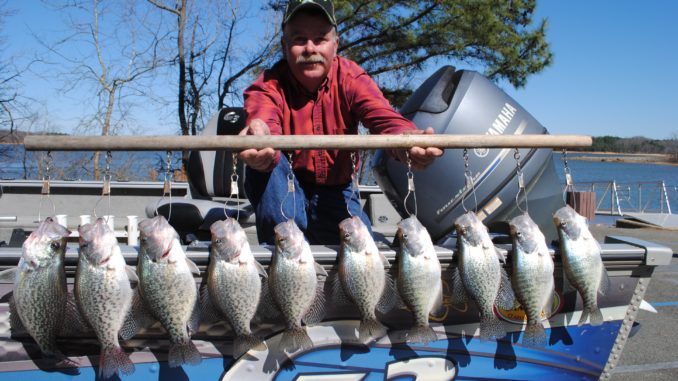
Much like running the tide to stay in productive waters, this guide on Kerr Reservoir tries to stay one step ahead of the crappie spawn — one giant step.
Saltwater fishermen often run the tide, moving from spot to spot within a bay or coastal creek to take advantage of a certain water depth where fish are biting.
On North Carolina’s Kerr Reservoir, guide Chris Bullock runs the spawn — the crappie spawn. He can get several weeks of top-drawer, prespawn fishing for slab crappie in March because he knows where they’ll spawn first, where they’ll spawn next, and when they’ll be thinking about mostly about feeding before they spawn.
Bullock, a native of Fountain, N.C., who runs Kerr Crappie and Cats Guide Service, knows that crappie are at their largest in the days before they head to the shallows to spawn, and he keys on the movement of fish in different areas of Kerr Lake, aka Buggs Island, to make sure he’s on them at the right time.
“The spawn starts up around Clarksville, Va., and it progresses downstream,” Bullock said. “They spawn first up there; they work their way down. When the water temperature gets to about 52 degrees, they’re raring to go.”
What Bullock keys on are brush piles along the channels in creeks up and down the 49,500-acre reservoir along the North Carolina-Virginia border. When he can find slabs around brush in 8 to 12 feet of water back in the creeks, he knows the spawn hasn’t arrived, and he knows they’ll be biting. When fish leave the brush, he said they head for shallow, spawning flats, and the move can be so fast that fish are here today, gone tomorrow.
One windy, cloudy March day in 2016, Bullock was scouting for a crappie trip the next day, having spent several days in a row guiding fishermen who were targeting Kerr’s trophy blue catfish. He spent several hours locating schools of slabs hanging on brush in a creek near the lake’s Ivy Hill landing, and once he knew they were there, he visited other creeks to see if they were on similar cover, in similar areas.
The next day, his two clients, fishermen from Richmond, Va., carried home 106 crappie, none shorter than 9 inches and the biggest 20 ranging from 131/2 to 161/4 inches long — true slabs.
“This time of year scares me, because they’ll be getting off the brush and going to the backs of the creeks,” he said. “I love to catch ’em when they’re offshore, when they’re active. That’s when you can catch lots of them in each place, but it doesn’t take ’em long to go from brush to where they’re gonna spawn. Maybe they can make it in one day. They can be halfway out one day, in the back of the creek the next.
“If you can catch ’em before they move, they’ll be feeding up.”
Bullock looks for brush piles — either ones he’s sunk himself or others he’s found on his electronics — midway back in major creeks in 8 to 12 feet of water. He loves to find brush that tops out just 3 or 4 feet from the surface; if his electronics shows fish, he’ll back off the length of a good cast and have at it with tiny, soft-plastic artificials.
He’ll fish 7-foot, light-action Lew’s Wally Marshall spinning rods mated with Daiwa Sweepfire 2500 reels spooled with 6-pound Suffix monofilament in hi-vis yellow. He ties on 1/8-ounce jigheads and threads on Bobby Garland Baby Shad in green; he’ll have several green/white 1/8-ounce bucktails tied on.
Bullock determines how deep he wants to fish — usually right at the level where crappie are holding, or a foot or two above — and when he casts his jigs to the brush, he’ll count them down to the right depth, one second per foot, before closing the bail on his reel and starting a very slow retrieve, maybe one turn of the reel handle every three seconds.
If he catches a fish on his first half-dozen casts, he’ll spend more time on the brush pile, often putting a dozen or more fish in the boat. If his first half-dozen casts aren’t productive, he might move right over the brush and fish his jigs almost vertically for fish that may not be quite as active. When he jigs vertically, he likes to move his knot to the side of the line-tie that faces the jig’s hook. If vertical jigging doesn’t work, he’ll move to his next brush pile — he has around 3,000 of them marked as waypoints on his depth finder.
If Bullock finds crappie around brush in the Clarksville area, he’ll move down the lake and fish brush in creeks between there and the dam, knowing fish in those areas will not likely have gone to the backs of creeks to spawn. But if he finds crappie on brush, say, in the Ivy Hill area, he can’t be sure they’ll be on brush around Clarksville; they might have already moved shallow.
“Just because you can catch fish on brush down the lake doesn’t mean you can go up the lake and still catch ‘em on brush,” he said.
If he can’t find prespawn fish, he’ll head to the backs of creeks and fish places he recognizes as spawning flats with a multiple-rod setup, tight-lining or “pushing” tiny jigs, often tipped with minnows. He fishes multiple Capps/Coleman rods from 6 to 18 feet long, arranging them around the bow of his boat in rod-holders, tying a 3/4-ounce trolling weight to 10-pound mono, then dropping down a 2-foot leader of 6-pound mono and a jighead.
“Once in a while, I’ll troll a Capps/Coleman double-minnow rig, or I’ll maybe tip a minnow with a jig,” Bullock said. “I want to push at about .3 to .5 mph. If I’m in 6 feet of water, I want to be fishing 3 to 4 feet deep; If I’m in 8 feet of water, I want to be fishing 5 or 6 feet deep.
“Most of the channels are silted in in the backs of the creeks, but they’ve still got stumps back there. They’ll spawn on stumps from 3 to 8 feet deep; some will go to the bank, but very few. If the water’s up, they’ll get on the bank if there’s brush there. If the water isn’t stable, Mother Nature tells them not to go up there if they want to stay wet.”
Bullock tight-lines until the water temperature reaches 55 degrees. When it heads into the upper 50s and toward 60, he’ll long-line troll out the stern of his boat at .8 to 1.5 mph to find scattered fish with 1/16- and 1/32-ounce jigs.
“When I’m long-lining, I like to pull Road Runners, all different colors,” he said. “In an hour or two, you can figure out which color they want best and switch over. I’ll tip them with a minnow; you can catch ’em just on a Road Runner, but I think they’ll hold the bait longer if it’s tipped with a minnow.”
DESTINATION INFORMATION
HOW TO GET THERE — Kerr Lake, aka Buggs Island, lies along the North Carolina-Virginia border. US 58 roughly parallels the northern side of the lake, I-85 runs north-south east of the lake, and NC 39 and US 15 offer access to different areas. Dozens of public boat landings surround the lake. www.kerrlakeguide.com/boat-ramps-camping-picnic-areas.
WHEN TO GO — Crappie spawn when the water temperature reaches the high 50s, normally in mid to late March. Good fishing will begin in late February and last into April. When the water temperature gets into the 60s, crappie move back to deeper water.
BEST TECHNIQUES — Cast grubs and jigs to crappie holding on brush piles in 8-14 feet of water midway back in the creeks until the water temperature reaches the mid-50s and sends those fish to spawning grounds in the backs of creeks, where anglers turn to tight-lining vertically with jigs or jigs tipped with minnows. Use light-action tackle and 6-pound test line.
FISHING INFO/GUIDES — Chris Bullock, Kerr Crappie and Cats Guide Service, 252-902-4039, www.kerrcrappieandcats.com. See also Guides and Charters in Classifieds.
ACCOMMODATIONS — Henderson-Vance County Chamber of Commerce, 252-438-8414, www.hendersonvance.org.
MAPS — GMCO Maps, 888-420-6277, www.gmcomaps.com.

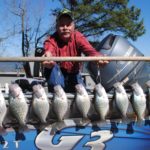
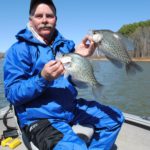
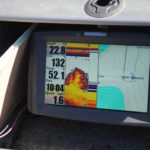
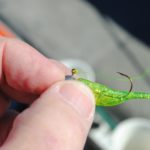
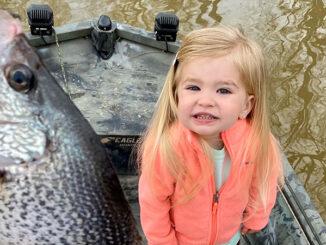
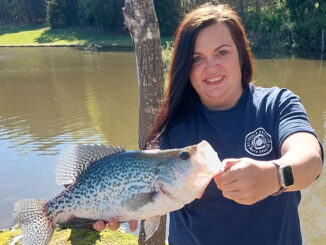
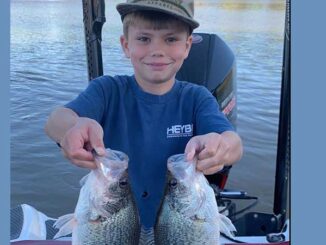

Be the first to comment